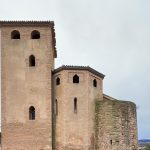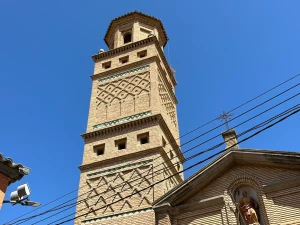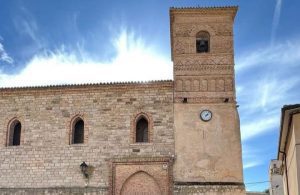
Circular from
the country school
The “Circular from the rural school” project is a cooperation project between rural development groups led by the Asociación Territorio Mudéjar.
The following have participated in the project: ADRI Calatayud-Aranda, ADRI Jiloca-Gallocanta, FEDIVALCA -Valdejalón and Campo de Cariñena-, ASOMO Tarazona and el Moncayo, CEDEMAR -Bajo Aragón Caspe and Ribera Baja del Ebro-, ADRAE -Ribera Alta del Ebro- and ADEFO Cinco Villas.
The objective is to develop educational materials around the Mudejar identity of the towns, placing rural schools and the educational community of the towns as the center of the project.
Based on the work developed, for almost three years, the students of fifteen schools have designed a walk through their town in which we can learn about the main points of interest and their connection with the Mudejar culture.

Aniñón
This walk shows us the work of the pupils of the CRA Río Ribota school in Aniñón.
Aniñón is in a privileged location, on the foothills of the Sierra de la Virgen, opposite the Sierra de Armantes mountain range. On the remains of an ancient castle, the church of Nuestra Señora del Castillo stands on one of the highest points in the town. The irregular urban layout of the town is evident throughout the route. At the end of the route is the Olive Oil Museum, where you can learn about the production process in an original mill. Stopping points and educational activities

1. History of the town
The location of Aniñón is very rich in materials, which favoured Mudejar construction due to the proximity of the materials and the existence of people who knew how to work them. The best example of this can be found at the highest point of the town centre, the church of Nuestra Señora del Castillo. Its tower is one of the most outstanding elements of the complex, offering a varied decorative repertoire.
This point is linked to the didactic activity 1

2. Construction materials
The materials used by Mudéjar masons can be found in the surrounding area. The most common materials are: clay (for making bricks), plaster (as mortar and render), wood (roofs) and alabaster.
This point is linked to the didactic activity 3

3. Mudejar architecture
The Mudejars were highly sought-after master builders by the great patrons of the time and their works were in keeping with the taste of the period. Decoration was a fundamental part of the construction of these spaces. Thus, they generated lights and shadows, which made the monument change. The church of Aniñon could be considered one of the late fortified churches within the style, although its original construction dates from the 14th century, it underwent a profound reformation in the 16th century.
This point is linked to the didactic activity 4

4. Importance of water
The Mudejars had inherited a strong tradition of Islamic origin. In order to acclimatise their crops to the conditions of our climate, it was necessary to build irrigation systems. With irrigation, new crops were introduced and those that already existed were improved. Aniñón still maintains the craft of working the land, being a mainly agricultural locality.
This point is linked to the didactic activity 6

5. Importance of agriculture
The crops in Aniñón are rich and varied: from olives to vines (already cultivated since Roman times). Also almonds (already present in the gastronomy of the Muslim period). The Olive Oil Museum was the site of the old Almazara, the Arabic name used to designate the place where the olives are pressed and the oil is obtained.
This point is linked to the didactic activity 7









